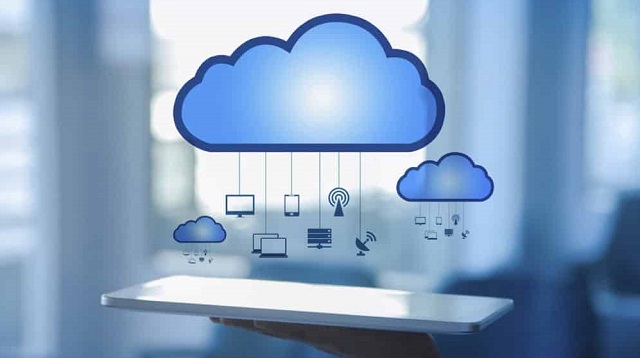
Cloud services are software or platforms hosted by third parties and made available to users via the internet.
Significantly, they enable the movement of user data from front-end clients (e.g., users' servers, tablets, desktops, laptops, or anything else on the users' end) to the provider's systems and back. They also encourage the development of cloud-native apps and the freedom of working in the cloud. Users only need a computer, an operating system, and internet access to use cloud services.
When the term "the cloud" first gained popularity in the early 2000s, it had an esoteric air. It seemed like something out of science fiction to access computer resources from a location other than an on- premise IT infrastructure. The reality, however, fundamentally and irrevocably altered business and technology processes.
What Is Cloud Computing?
The delivery of various services over the internet is called cloud computing. Some of these resources are data storage, servers, databases, networking, and software.
Significantly, cloud-based storage enables files to be stored in a remote database instead of a proprietary local storage device. An electronic device can obtain data and the software required to perform it so long as it has internet access.
Cloud computing is becoming more and more popular due to its many benefits for both consumers and enterprises, including higher productivity, cost savings, speed and efficiency, and increased security.
How Do Cloud Services Function?
Cloud services permit data transfer between cloud service providers/vendors' servers and user/customer servers and devices. Notably, cloud services can be accessed via a virtual private network or a computer with an internet connection. They prevent consumers from investing in software licenses and supporting network equipment and servers.
Customers can use cloud services to obtain software, cloud storage, computing power, IT infrastructure, and other services without paying maintenance charges or performing software and hardware updates.
Notably, cloud service providers charge consumers using various billing methods based on consumed resources. You can get the best cloud services by reading reviews of reputable vendors online and establishing one that fits your requirements. They are often pay-per-use programs with a monthly or annual subscription.
Types Of Cloud Computing
1. Software As A Service (Saas)
Software as a Service (Saas) is a cloud-based paradigm for delivering on-demand software programs to users. It is a scalable monthly or yearly subscription if additional resources are required or additional users are added. It is the most well-known cloud service paradigm, in which vendor applications are hosted on a cloud infrastructure.
2. Infrastructure As A Service (IaaS)
Infrastructure as a Service (IaaS) is the fundamental building block of cloud architecture, involving providing virtual and physical IT infrastructure and networking services to consumers. IaaS is the basis for developing new technologies and hosting cloud-based applications like SaaS.
Raw block storage, file and object storage, load balancing, application firewalls, virtual machine disk image library, software bundles, virtual local area networks (VLANs), and IP addresses are examples of IaaS services.
3. Platform As A Service (PaaS)
Platform as a Service (PaaS) delivers on-demand software development tools via a web-based online environment.
The PaaS package is a computer platform that contains a database, operating system, web servers, network, and programming language execution environment enabling users to create cloud-based software and mobile applications.
PaaS necessitates sophisticated development to enable technologies such as application programming interfaces (APIs), automation, routing, orchestration, and containerization.
PaaS providers provide application developers with a development environment to create, test, deploy, and manage software applications. Vendors typically include development standards, distribution methods, and payment systems.
Types Of Cloud Computing Deployment Models
1. Public Cloud
Anyone can use the public cloud to access systems and services. Because it is exposed to all, the public cloud may need to be more secure.
The public cloud refers to one in which cloud infrastructure services are available to the general public or influential industrial groups via the internet.
In this cloud model, the infrastructure is controlled by the organization providing the cloud services, not the consumer. It is a cloud hosting that enables clients and users to quickly and easily access systems and services.
2. Private Cloud
The public cloud deployment paradigm is opposed to the private cloud deployment model. It is a one-on-one situation for a single user (client), and optional to share your hardware with anyone.
The difference between private and public clouds is how the hardware is handled. It is also called the "internal cloud" and refers to the capacity to access systems and services within a specific border or business.
Cloud platform is deployed in a secure environment protected by robust firewalls and overseen by an organization's IT staff. The private cloud provides greater control over cloud resources.
3. Hybrid Cloud
A hybrid cloud combines a public, private, and community cloud, in which the individual clouds are separate entities but share data and applications. The hybrid cloud has distinct examples of each model, resulting in the promised benefits of a multiple-deployment approach.
Hybrid clouds enable enterprises that employ on-premises technology but require increased scalability to migrate to a public cloud to suit their needs. Sensitive data can be kept on-premises in a private cloud, while employees can use the public cloud for applications and other resources.
Cloud Conclusion
Cloud computing makes advanced computing resources available on-demand, with consistent updates and without the need to purchase and maintain an on-premise infrastructure.
Teams become more productive and minimize time to market with cloud computing. It is so because they can rapidly buy and grow services without the significant effort required to manage traditional on-premise infrastructure.




